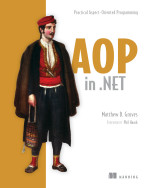Top Links
- Building Interactive Blazor Apps with WebAssembly (Ed Charbeneau)
- Announcing SQL Server Data Tools (SSDT) for ARM64 Architecture in Visual Studio 17.10 Preview 2 (Subhojit Basak)
- How to use Comments as Prompts in GitHub Copilot for Visual Studio (Laurent Bugnion)
- .NET Rocks! – Aspect-Oriented Programming in 2024 with Gael Fraiteur (Carl Franklin & Richard Campbell)
- Effortless Remote Debugging with Dev Tunnel in Visual Studio 2022 (Jayakumar Duraisamy)
- Introducing .NET Smart Components – AI-powered UI controls (Daniel Roth)
Web & Cloud Development
- Master ASP.NET Core by Building Three Projects (Beau Carnes)
- How to Add Electronic and Digital Signatures to PDFs in ASP.NET Core C# and Angular and Document Viewer for Angular: SignatureSettings Explained (Bjoern Meyer)
- What’s New in Syncfusion Blazor: 2024 Volume 1 (Gayathri Ramalingam)
- MudBlazor List Items: How To Create Awesome Blazor List Views (Nick Cosentino)
- Exploring the Latest Features Coming to JavaScript—ES2023 (Thomas Findlay)
- March 2024: A look at the latest Microsoft Entra key feature releases, announcements, and updates (Adam Matthews)
- pushState and URL Blocking (Eric Lawrence)
WinUI, .NET MAUI & XAML
- Chart of the Week: Creating a .NET MAUI Fast Line Chart to Visualize the Arctic Sea Ice Extent Since 2000 (Sneha Senthilkumar)
- Deploying .NET MAUI Blazor App to ProgramFiles’ (Mitchel Sellers)
Visual Studio & .NET
- How to Convert IAsyncEnumerable to List (Caleb Okechukwu)
- Logging – AOP and Metalama (Byte217)
- Server-Sent Events in .NET – Implementing The Most Elegant HTTP-Based Push Mechanism (Roko Kovač)
- Using the DisplayInformation class from a desktop Win32 application, part 1 (Raymond Chen)
- Our Favorite JetBrains Rider Shortcuts that aren’t Alt+Enter or Shift+Shift (Khalid Abuhakmeh)
Design, Methodology, AI & Testing
- Ditch your legacy planning tool: Get Agile with GitLab (Amanda Rueda)
- Create an AI Slack Bot to Chat with Your Data Using Embedchain, Pulumi on AWS (Tyler Mulligan)
- Prompt engineering: gathering source input and Prompt engineering: error checking the output (Tom Johnson)
- Adding a GitHub Codespace button to your repo (Paul Yu)
- An architect is not an evangelist (Bart Wullems)
- New Boards Hub on as default (Dan Hellem)
- Quick Copy and Import Test Case by Plan or Suite ID (Jihye Eom)
- Semantic Kernel’s new icon and the art of teamwork (Matthew Bolanos)
- OpenAI To Release ‘Materially Better’ GPT-5 For Its Chatbot Mid-Year, Report Says (msmash)
- From vision to reality: Microsoft’s partners embrace AI to deliver customer value (Nicole Dezen)
- Found means fixed: Introducing code scanning autofix, powered by GitHub Copilot and CodeQL (Pierre Tempel)
- On the path to responsible use of AI (Tania Cosentino)
Mobile, IoT & Game Development
- What’s New in 2024 Volume 1: Flutter (Vijayakumar Mariappan)
- Flutter takes the stage at GDC (Zoey Fan)
- State of Unreal 2024: all the news from Epic’s GDC showcase (Andrew Webster)
- Swift: Introducing the Benchmark Package: Complementing Unit Tests with Performance Checks (Joakim Hassila)
Screencasts & Videos
- How can I migrate my existing Xamarin.Forms projects to .NET MAUI? | On .NET (David Ortinau)
- Boston .NET Architecture Group Meetup: Alvin Ashcraft Get Started Building Windows Apps w WinUI 3 SDK (03-20-2024) (Robert Hurlbut)
- Fluent UI React Trainings: Advanced slots design & Positioning API (Fluent Team)
- The Three I’s of Educational Content (Jeff Fritz)
Podcasts
- Working Code Podcast – Episode 170: Product Design With Thelma Van (Ben Nadel)
- Practical AI Podcast – Prompting the future (Jared Zoneraich, Chris Benson & Daniel Whitenack)
- The Amp Hour #662 – The non-Stinky Car (Dave Jones & Chris Gammell)
- Software Engineering Radio 608: Lane Wagner on Revisiting the Go Language (Philip Winston)
Community & Events
- I’m in Texas to see the future (Bill Gates)
- Rockin’ the Code World Season 4: Special Guest Mark Brown (David McCarter)
- Tech job market remains in flux as layoffs continue and experienced workers struggle to get hired (Taylor Soper)
Database
- A Little About SOS_SCHEDULER_YIELD Waits In SQL Server (Erik Darling)
- SQL Compare Force Column Order in a Table (Steve Jones)
- Introducing database watcher for Azure SQL (Dimitri Furman)
- Does Your GROUP BY Order Matter? (Brent Ozar)
Miscellaneous
- Announcing Windows 11 Insider Preview Build 26085 (Canary and Dev Channels) (Amanda Langowski)
More Link Collections
- The Morning Brew #3907 (Chris Alcock)
- Daily Reading List – March 20, 2024 (#280) (Richard Seroter)
The Geek Shelf
 .NET MAUI Projects – Third Edition: Build multi-platform desktop and mobile apps from scratch using C# and Visual Studio 2022 (Michael Cummings & Daniel Hindrikes) – Referral Link
.NET MAUI Projects – Third Edition: Build multi-platform desktop and mobile apps from scratch using C# and Visual Studio 2022 (Michael Cummings & Daniel Hindrikes) – Referral Link

 AOP in .NET
AOP in .NET





